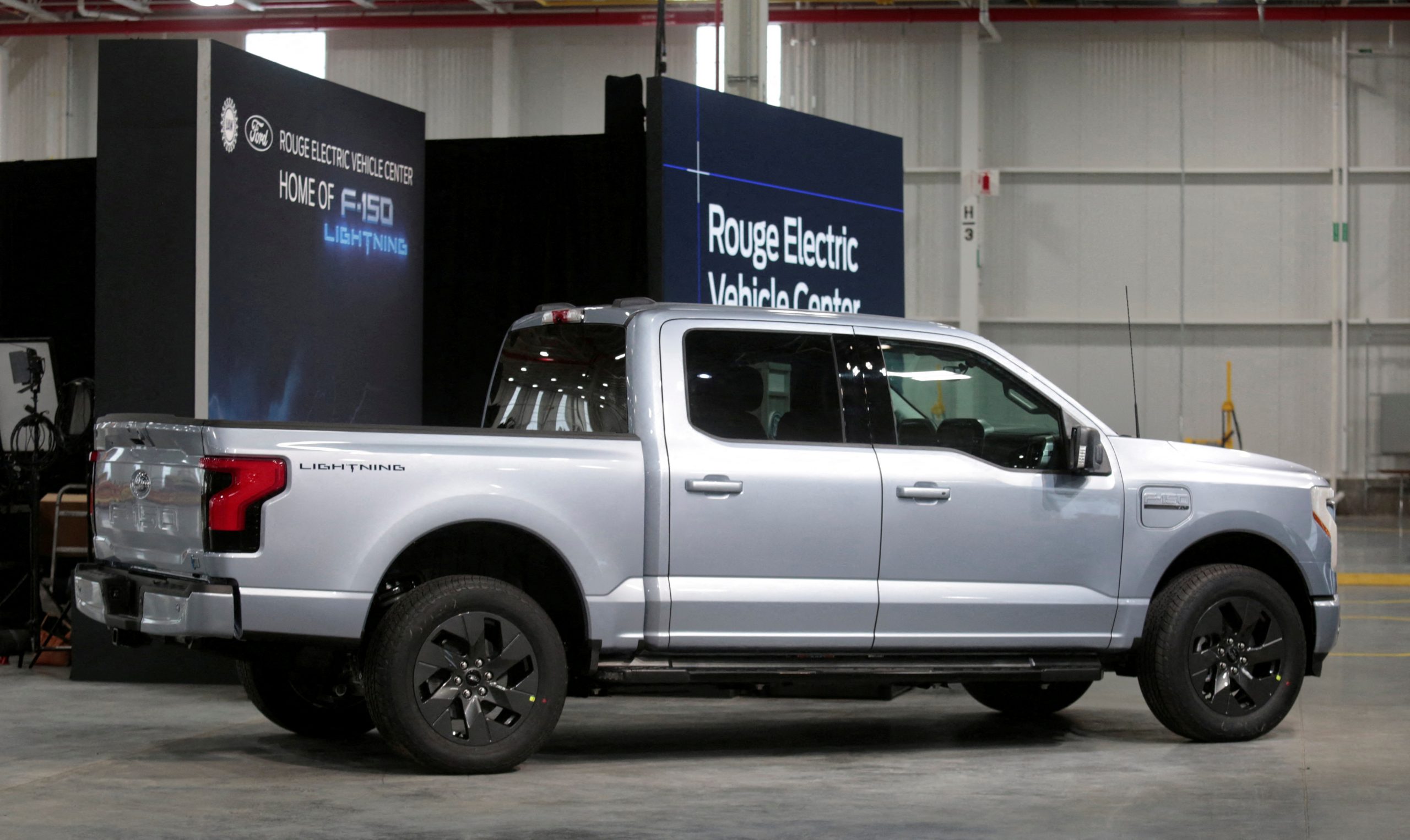
Ford Motor Co said on Wednesday it will boost spending on electric vehicles (EV) to $50 billion, up from the previous $30 billion, through 2026 and run its EV unit separately from its legacy combustion engine (ICE) business, in a move aimed at catching industry leader Tesla Inc.
The reorganization and additional investment comes as Chief Executive Jim Farley bets aggressively on the company’s electrification strategy.
Farley said Ford plans to build more than 2 million EVs in 2026, about one-third of its annual global production, with EVs rising to 50% of its total volume by 2030.
Ford shares were up 7.2% at $17.90 at midday on Wednesday.
The company does not expect to make a profit on its EV business until the next-generation models begin production in 2025, according to Chief Financial Officer John Lawler.
Reuters on Tuesday was first to report that Ford planned to separate its main vehicle efforts into two separate businesses in order to accelerate its electric-vehicle efforts.
Although the EV business, named Ford Model e, will be separated from the company’s internal-combustion engine (ICE) unit, Ford Blue, the two divisions will share technology and “best practices,” the automaker said.
The two businesses, along with commercial-vehicle unit Ford Pro, will report separate financial results by 2023, it added.
“We view the news positively as it has strong industrial logic, and it will enable investors to separately value the money-losing EV business,” Wells Fargo analyst Colin Langan said in a note.
Barclays auto analyst Brian Johnson said in a note titled “Reorganization not restructuring” that Ford‘s announcement suggests it is “likely to accelerate its progress towards a BEV future – but not to a near-term spin.”
Doug Field will lead Ford Model e’s product development as chief EV and digital systems officer, and Lisa Drake will head EV industrialization for the unit.
Farley’s move stops short of addressing calls from some investors who have pushed Ford and General Motors Co to spin off their EV operations as a way to extract the full value of those businesses.
Industry analysts, however, said that with Wednesday’s announcement, Ford would be setting the table for a possible spinoff of its EV unit down the road.
Ford said it hoped to cut structural costs of up to $3 billion in its ICE business, but did not say if that effort would involve reducing head count. Farley also said the EV unit will need to spend “billions” to secure critical raw materials for batteries as EV volume ramps up.
“We need the ICE business to generate cash and the EV business to focus on innovation,” Farley said.
He had previously said that his management team believed the automaker’s EV and ICE businesses are underperforming on an earnings basis.
Ford said it expects to spend $5 billion on EVs this year, a two-fold rise over 2021. It is also targeting an adjusted earnings before interest and taxes (EBIT) margin of 10% by 2026 versus 8% it hopes to achieve this year.
Copyright 2022 Thomson/Reuters
